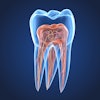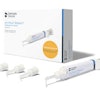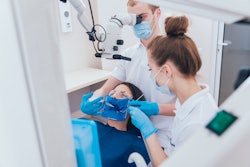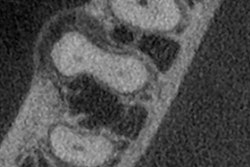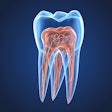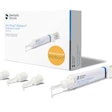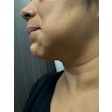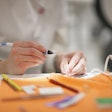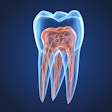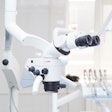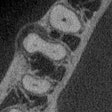Silver polydopamine-modified hydroxyapatite (HA-PDA-Ag-PDA) fillers may improve root canal therapy by boosting the antibacterial properties of resin-based root canal sealers (RCS), according to a study published on July 9 in BMC Oral Health.
Additionally, this sealer may offer other benefits, including better wettability of the dentin's surface, the authors wrote.
“HA-PDA-Ag-PDA fillers significantly improved the antibacterial, mineralization properties as well as the wetting ability of resin-based RCS,” wrote the authors, led by Samar M. Nashaat of the Mansoura University Faculty of Dentistry in Egypt.
For this study, 15 single-rooted teeth were used to evaluate the wettability of a resin-based RCS. Researchers synthesized HA-PDA-Ag-PDA fillers and analyzed them using Fourier transformation infrared spectroscopy, transmission electron microscope, and x-ray diffraction, they wrote.
The control group (G0) used unmodified RCS (Adseal), while experimental groups (G1 and G2) contained 1 wt% and 2 wt% of the modified fillers, respectively. Antibacterial activity was assessed against Enterococcus faecalis (E. faecalis) by measuring colony-forming units (CFUs). The RCS groups were also evaluated for their mineralization potential and dentin wettability using scanning electron microscopy and contact angle measurements.
The addition of HA-PDA-Ag-PDA fillers to RCS showed statistically significant antibacterial activity against E. faecalis in both fresh and 24-hour samples. In fresh sealers, G0 had 198.57 ± 29.11 CFU/mL, while G1 and G2 showed none. After 24 hours, G0 had 1142.86 ± 198.81 CFU/mL, compared to 32.29 ± 2.69 CFU/mL in G1 and 16.07 ± 3.49 CFU/mL in G2, with no significant difference between the two experimental groups, they wrote.
After 28 days submerged in simulated body fluid, G1 and G2 surfaces displayed a dense hydroxyapatite layer, unlike G0, which showed no change. Contact angle testing revealed improved wettability in the modified groups: G0 had the highest angle (45.10° ± 0.61), while G1 decreased to 39.14° ± 0.24, and G2 had the lowest angle at 33.75° ± 1.15, indicating the best wetting ability.
However, the study was limited to in vitro testing. Further in vivo research is warranted based on the results, the authors added.
“Based on the results of the current study, authors would highly recommend performing further in-vivo studies, in the near future, to evaluate the long-term clinical effectiveness of the prepared experimental root canal sealer,” they concluded.


